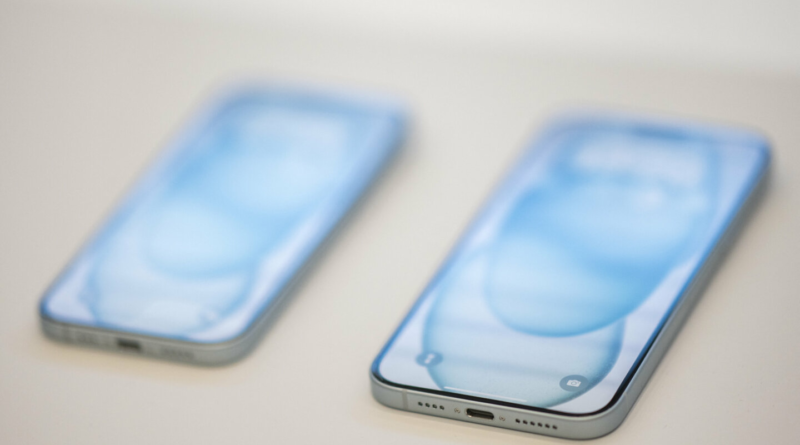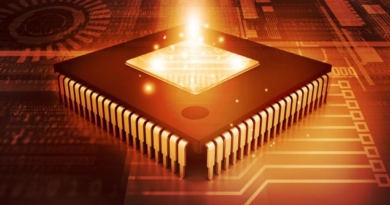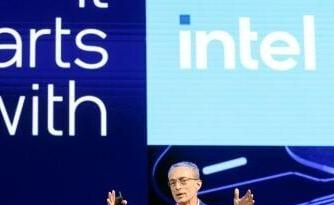What can you expect from the Apple A17 Pro chip? – Tech Wire Asia
Apple’s A17 Pro sets a new paradigm in mobile technology. (Source – AFP)
By Muhammad Zulhusni
As we navigate through an era of unprecedented technological advancement, Apple is aiming to once again push the envelope with the delivery of the A17 Pro chip.
The tech behemoth has long been synonymous with innovation, but its recent foray into proprietary silicon has ushered in a transformative new chapter. With the unveiling the A17 Pro chip, Apple isn’t just enhancing its own devices, but setting new industry benchmarks. But enough glowing hyperbole – let’s take an in-depth look at how the A17 Pro chip promises to redefine the boundaries of performance and efficiency. And how it looks likely to deliver on those promises.
Apple’s in-house silicon technology has been a cornerstone of its strategy for years, epitomizing the company’s belief in a symbiotic relationship between hardware and software. The transition away from Intel was more than just a political shift; it was a commitment to innovation that has culminated in the company’s latest offerings.
The recent Apple annual product launch did not disappoint. While the iPhone 15 ships with the familiar A16 Bionic chip—already seen in the iPhone 14 Pro and Pro Max—the real star of the show was the brand-new A17 Pro chip, which will be the heartbeat of the iPhone 15 Pro and Pro Max.
Muhammad Zulhusni | 14 September, 2023
The A17 Pro signals a new frontier for Apple’s engineering teams. It’s the company’s inaugural chip designed using a 3-nanometer manufacturing process.
This is a major technological advance from the 5-nanometer process used for the A16 Bionic. What does this mean in layman’s terms? A smaller manufacturing process allows for a higher density of transistors, effectively packing more computing power into a tinier, more efficient package.
To put the minuteness of this technology into perspective, Apple has revealed that some of the components inside the A17 Pro’s transistors measure a mere 12 silicon atoms in width. This feat of nanotechnology is nothing short of astounding. Moreover, the A17 Pro comes jam-packed with a staggering 19 billion transistors, showing a six-billion-transistor leap from the A16 Bionic, further pushing the boundaries of what’s possible in such a small form factor.
Architecturally speaking, the A17 Pro carries forward the well-balanced blueprint of its forerunner, having two high-performance cores alongside four energy-efficient ones. Although the clock speeds of these cores have yet to be released, Apple assured users that they can expect a 10% speed bump, coupled with improved branch prediction mechanisms and higher execution bandwidths.
Apple is never a company to make modest claims, so it’s unsurprising that it has dubbed the A17 Pro “the world’s fastest single-threaded mobile CPU.” Given that competitors are still struggling to keep pace with the A16 Bionic though, Apple’s assertion doesn’t seem too far-fetched.
Apple introduces the A17 Pro. (Source – X)
Additionally, the efficiency cores in the A17 Pro are hailed by Apple as the “most power-efficient mobile CPU cores,” claiming a performance-per-watt ratio that is a solid three times more efficient than those of rival processors.
The chip’s machine learning capabilities are also quite remarkable. Though the neural engine retains the 16-core structure found in the A16 Bionic, it comes supercharged with a 2x performance increase. This enhancement equates to an almost unimaginable 35 trillion operations per second, elevating features such as voice recognition and advanced photo sorting to new heights.
Regarding graphics, Apple is bringing a revolutionary, pro-class GPU to the table. It’s an elevated six-core design, specifically engineered for optimized performance and energy efficiency. The GPU also incorporates novel rendering techniques and boasts a 20% acceleration over its predecessor.
Dashveenjit Kaur | 12 September, 2023
This is a significant moment for game developers and those immersed in augmented reality. The A17 Pro’s GPU offers hardware-accelerated ray tracing, a feature that ensures photorealistic lighting and shadows in rendered environments. This hardware-level support allows for a fourfold increase in ray tracing speed compared to software-based solutions, offering higher frame rates and a more immersive user experience.
Apple is also announcing the inclusion of heavyweight gaming titles like Resident Evil 4, Resident Evil Village, and The Division Resurgence. These high-caliber games will be available on the iPhone, a feat made possible largely because of the new chip’s computational prowess.
But how does the A17 Pro fare against its main competitor, Qualcomm’s Snapdragon 8 Gen 2? On the CPU front, the Snapdragon is manufactured using a 4nm process and features an octa-core design. But its maximum core speed is just 3.2GHz, falling short when compared to the A17 Pro’s blazing 3.7GHz speed.
As for graphics, Qualcomm had an edge last year with its Adreno 740 GPU. But Apple aims to reclaim its crown with a 20% year-over-year performance improvement and hardware-accelerated ray tracing, giving it a significant leg up in the competition.
Can the Snapdragon compete with the Apple A17 Pro chip? (Source – X)
Apple’s new A17 Pro chip sets the bar exceedingly high in the mobile computing space. As we anticipate head-to-head comparisons with Qualcomm’s next-gen offerings, it’s clear that Apple, at least for now, has regained its leading edge in the world of high-performance, high-efficiency mobile technology.
You can find more about this comparison from Beebom.
By Muhammad Zulhusni
Muhammad Zulhusni
As a tech journalist, Zul focuses on topics including cloud computing, cybersecurity, and disruptive technology in the enterprise industry. He has expertise in moderating webinars and presenting content on video, in addition to having a background in networking technology.
© 2024 Tech Wire Asia | All Rights Reserved
Terms of use Privacy Policy



